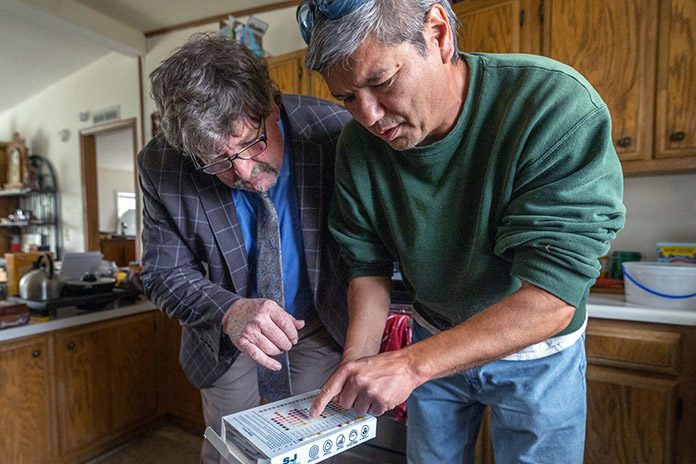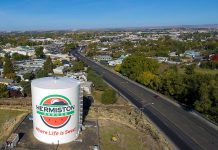
By Alex Baumhardt/Oregon Capital Chronicle
Nonprofit community groups in Oregon and nationwide are calling on elected leaders and officials at the U.S. Environmental Protection Agency to exercise their regulatory power to stop growing nitrate pollution in drinking water caused by farm fertilizers.
Nitrate, a compound found in fertilizers and in animal manure, has contaminated an underground aquifer in northeast Oregon for decades, drawing outcry and concerns in recent years over the public health threat it poses to residents in the area. Nitrate contamination has become a problem in rural communities and cities in many parts of the U.S., spurring a group of nearly two dozen nonprofits from several different states to band together to demand the EPA do more to regulate farms and sources of nitrate. Ingesting elevated nitrate concentrations over long periods is particularly bad for pregnant people and infants, and has been linked to adverse health impacts including different cancers and thyroid problems.
In an Oct. 29 letter to the EPA’s water administrator, leaders at Oregon-based WaterWatch, Columbia Riverkeeper and Oregon Rural Action, along with 20 other groups from around the country, requested the EPA meet with them to discuss what the agency could do under the federal Safe Drinking Water Act to protect people living in areas with high contamination. Under that act, people can petition the EPA to take “primacy” over state agencies and to regulate and enforce penalties against water polluters that the state has not.
“Nitrate contamination and the harm it poses to human health demands a national approach and response in light of the growing prevalence of the problem and the patchwork of ineffective state strategies. We request a meeting to discuss how EPA can address this widespread problem with a cohesive, coordinated response that reflects the scope and urgency of this national crisis,” they wrote to Bruno Pigott, the agency’s water administrator.
The request follows an Oct. 25 letter from Oregon Rural Action and Food & Water Watch to Oregon Gov. Tina Kotek, demanding the state commit to fully funded regulatory actions to penalize polluters and help guarantee clean drinking water for residents in Morrow and Umatilla counties. In the letter, Kristin Anderson Ostrom, executive director of Oregon Rural Action, and Tyler Lobdell, staff attorney at Food & Water Watch, expressed frustration with a plan that Oregon officials released in late September to address nitrate pollution in the Lower Umatilla Groundwater Basin that largely leans on voluntary actions state agencies and polluting industries can take.
“As written, this is a plan for a plan, offering little more than an articulation of the state’s desire to meet its longstanding obligations under existing law, rather than a plan to achieve the nitrate reduction goal,” the two wrote in their letter to Kotek.
Neither Kotek nor the EPA have responded to the letters, according to Kaleb Lay, research and policy director at Oregon Rural Action.
Data from the Oregon Health Authority show that within the last year-and-a-half, only about half of the 3,300 wells in Morrow and Umatilla counties in northeast Oregon have been tested for nitrate, and more than 400 have come back with unsafe levels of the compound.
The EPA has limited authority to regulate farmers, who are considered “nonpoint-source” polluters under the federal Clean Water Act. This means that, despite polluting groundwater by spreading fertilizers and water rich in nitrate, because farmers aren’t piping the chemicals directly from a facility into a body of water, they aren’t regulated.
The groups are arguing that federal regulators can in fact intervene under the Safe Drinking Water Act.
In the last decade, groups have submitted five emergency petitions to the EPA to prompt federal intervention in nitrate contamination in drinking water in Iowa, Minnesota, Oregon, Washington and Wisconsin. Among them is Columbia Riverkeeper and Food & Water Watch, which in 2020 petitioned the EPA to intervene in the nitrate contamination in northeast Oregon. Officials from the EPA’s Northwest office have instead been meeting with Oregon Rural Action and other groups in northeast Oregon and monitoring the state’s progress.
“All five petitions tell the story of intensive agricultural land uses resulting in alarming nitrate levels,” the 23 groups wrote in their letter to Pigott, demanding the federal environmental regulatory agency start holding polluters and state agencies to account. “In the face of these rising nitrate levels, state officials have failed to implement necessary restrictions, and instead have relied almost exclusively on voluntary best management practices that have proven ineffective for decades.”
This story first appeared in the Oregon Capital Chronicle.









